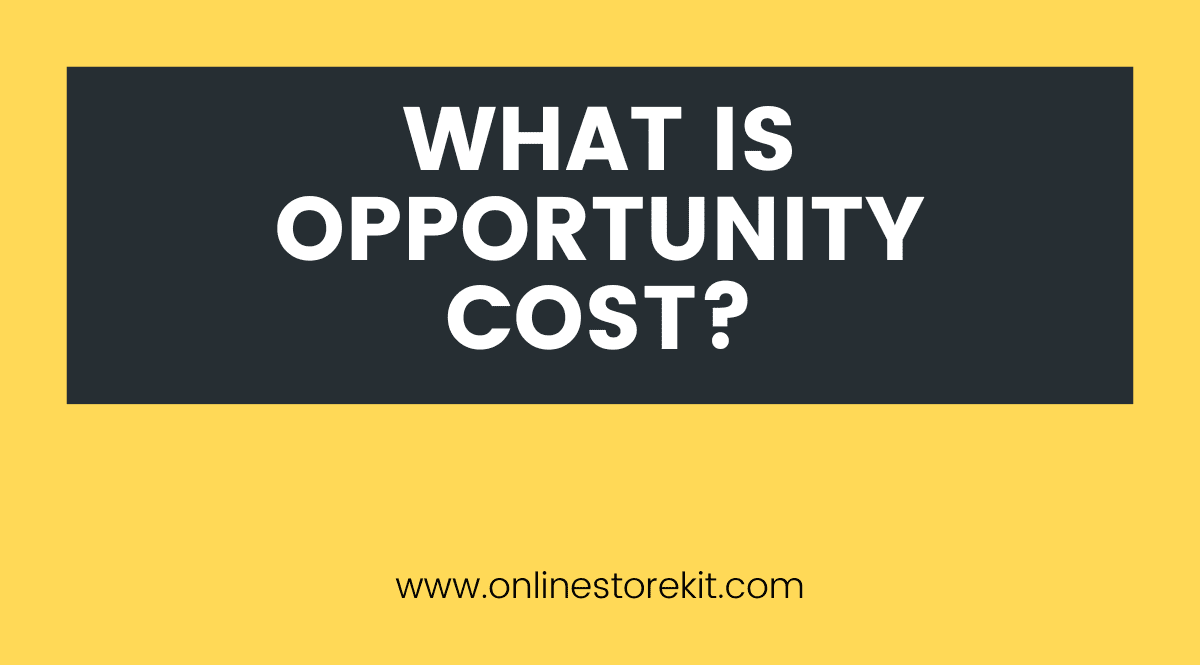Opportunity cost is like a double-edged sword, in that it can either be beneficial or detrimental to one’s decision making. This article will explore the concept of opportunity cost and its various facets to provide a comprehensive guide.
It will define what opportunity cost is, discuss how it can be calculated, provide examples of such costs, identify the benefits of understanding opportunity costs, and offer strategies for minimizing them.
Key Takeaways
Hide- Opportunity cost is the cost of a foregone alternative and helps organizations differentiate between choices.
- It is important to consider both tangible and intangible factors when calculating opportunity costs.
- Examples of opportunity costs include time spent on a task that could have been used elsewhere, resources allocated to one project instead of another, and money invested in one vehicle rather than another.
- Strategies for minimizing opportunity costs include maximizing returns on investments, assessing potential risks, delaying present spending for larger future gains, and efficiently using resources to minimize losses.
What is Opportunity Cost?
Opportunity cost is the cost of a foregone alternative, or what must be given up in order to pursue an option.
The concept of opportunity cost helps organizations differentiate between choices and maximize their return on investment (ROI).
It is essentially the value assigned to the next best action that was not taken.
Opportunity costs are often difficult to calculate because they require considering both tangible and intangible factors.
For example, when making an investment decision, one must consider potential revenue from the chosen course of action as well as any other opportunities that could have been pursued had resources been allocated differently.
Additionally, opportunity costs can include missed gains such as lost customer relationships and brand loyalty due to inaction.
By understanding opportunity costs, businesses can make more informed decisions about how they allocate their resources.
This insight into opportunity costs provides a useful tool for maximizing ROI by differentiating between choices and evaluating each option according to its associated costs and benefits.
As such, it is critical for organizations to understand opportunity cost when making strategic decisions in order to maximize returns while minimizing losses.
Moving forward, it’s important to keep in mind that calculating opportunity costs requires careful consideration of both tangible and intangible aspects of decision-making in order to make informed decisions that will ultimately lead to success.
Calculating Opportunity Costs
Calculating the trade-offs between alternatives is an important factor in making financial decisions.
Opportunity cost is the cost of a missed opportunity, and it must be taken into account when making any type of decision.
This includes payment for resources used, as well as time investment and resource allocation.
Calculating opportunity costs requires looking at what you gain from one choice compared to the other possible options:
- Assess all potential options and compare them to determine which has the highest expected return.
- Consider both tangible and intangible costs associated with each option, including long-term effects that may not be immediately apparent.
- Think about how your current choice affects future opportunities and whether there are any external factors that could influence your decision-making process.
In short, calculating opportunity costs involves evaluating all options available before determining which will yield the best outcome in terms of cost versus benefit ratio.
Time investment should also be taken into account when comparing different alternatives, since it can often have a major impact on long-term success or failure of a project or venture.
Through thorough analysis of resources required and potential rewards gained from particular decisions, individuals can ensure they make informed decisions that maximize value while minimizing risks associated with their investments.
Examples of Opportunity Cost
Examples of opportunity cost include:
- The time spent on a task that could have been used elsewhere
- Resources allocated to one project instead of another
- Money invested in one investment vehicle rather than another
Opportunity cost is an important concept for individuals or organizations who are trying to maximize efficiency and save money.
Time management is a key factor in assessing opportunity costs. If the time spent on one task is greater than the potential benefit it would yield, then that task should be avoided or minimized.
Similarly, when allocating resources among various projects, organizations must weigh the expected returns from each project against their respective costs.
Finally, when investing money, people should consider not only the potential return but also what other investments could have yielded with that same amount of capital.
Benefits of Understanding Opportunity Cost
Comprehending the concept of opportunity cost can provide individuals and organizations with a range of benefits. These include:
- Improved time management
- Enhanced risk assessment
- Greater ability to prioritize activities and investments
Having a thorough understanding of opportunity cost allows individuals and organizations to make better-informed decisions due to having full knowledge of the potential consequences associated with their choices.
Being aware of the alternative opportunities that could be pursued instead helps individuals and organizations focus on those options which offer the greatest benefit for the least amount of effort or resources invested.
An improved understanding of opportunity cost also aids in decision making by helping identify areas where trade-offs must be considered when investing limited resources into multiple projects or initiatives.
Having an appreciation for opportunity costs enables individual and business leaders to accurately weigh up their various options prior to committing time, money, or other resources towards any venture.
This can help ensure that any investment is calculated well enough so as not to leave them worse off than before they began.
By recognizing that there is always an inherent price attached to every decision, even if it isn’t immediately apparent, people are better equipped to assess risks more effectively while still achieving desired outcomes.
Understanding opportunity cost provides an important tool in managing scarce resources efficiently while still allowing individuals or organizations prepare for future developments or changes in circumstances.
Strategies for Minimizing Opportunity Cost
Analyzing strategies for minimizing opportunity cost can help ensure that resources are used efficiently while still allowing individuals or organizations to achieve their desired outcomes.
One of the most effective approaches is maximizing returns on investments, which involves researching and selecting investments that have a higher likelihood of providing a return on investment.
Additionally, assessing the potential risks associated with an investment can also help minimize losses in the future.
Delayed gratification is another approach to minimizing opportunity cost, as it entails delaying present spending in order to benefit from larger gains in the future.
This strategy requires individuals or organizations to carefully consider present needs versus long-term goals and objectives.
Conclusion: Opportunity Cost Definition and Guide
Opportunity cost is a valuable concept that provides insight into the choices we make.
By understanding opportunity cost, one can better assess which financial decisions are best for long-term success.
As the adage goes, “you can’t have your cake and eat it too” – with every choice, there is a trade off to consider. To minimize opportunity cost, carefully weigh all options before committing resources.
Ultimately, by recognizing and calculating opportunity costs, individuals can maximize their investments and achieve greater financial stability.





